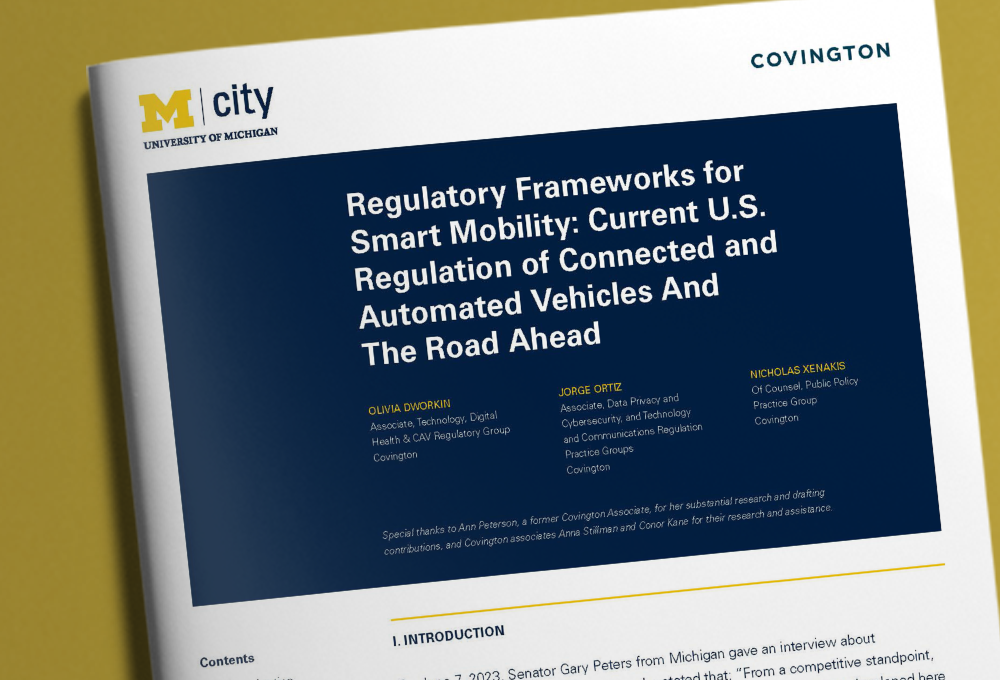While governments grapple with regulating CAVs, innovators should engage with policymakers to help inform future

With increased innovation in and adoption of new connected and automated vehicle (CAV) technologies, the U.S. federal government and state governments across the country are grappling with how to responsibly regulate these technologies, which promise to help make transportation safer, cleaner, more equitable and more accessible. Questions about CAV regulation ranging from uncertainty about how to allocate regulatory authority between federal and state governments (and between regulatory agencies) to debates over which specific safety standards should apply loom for automakers, insurers, technology companies, and other industry actors.
Covington & Burling LLP, a Washington, DC-based global law firm, surveyed current federal and state legislative and regulatory frameworks aimed at advancing the deployment of CAVs to give an overview of the state of regulatory frameworks and where they may be headed. The results of the study are outlined in a new white paper, published today.
Given the economic and safety incentives for CAVs, federal and state governments are likely to continue updating current automotive regulations, or to adopt CAV-specific new regulations, to encourage further development, according to the paper.
Federal attention remains on ensuring CAVs increase roadway safety. In states, the increasing number of public private partnerships indicates that states will continue looking to the private sector to inform regulations to facilitate CAV development. However, some states may also follow in California and Nevada’s footsteps, creating regulations and programs that allow CAV testing and operation, but imposing robust licensing requirements to ensure safe and efficient CAV use.
Bottom line, state and federal governments are far from finished in their efforts to create workable frameworks that encourage advancement and deployment of CAVs and CAV technologies, and more activity is bound to occur, the paper concludes. Stakeholders seeking to innovate in this space should watch these developments closely, consider how best to implement or take advantage of emerging programs, regulations, guidance, and standards, and look for opportunities to productively engage with regulators and lawmakers and help develop a record that will inform future frameworks to advance the development and deployment of CAVs and CAV technologies.
The paper is titled, “Regulatory Frameworks for Smart Mobility: Current U.S. Regulation of Connected and Automated Vehicles And The Road Ahead.”
The paper is the fourth and final in a series of white papers published by Mcity in partnership with Covington & Burling that examine data policy questions as they relate to smart mobility. Covington & Burling is a member of Mcity’s Leadership Circle of industry partners.
Other papers in the series include:
- “Privacy Frameworks for Smart Cities”
- “Contracting Tools for Transportation Data”
- “Data Governance Frameworks for Smart Cities: Key Considerations for Data Management and Use”
The series has also been published in the Journal of Law and Mobility, based at the University of Michigan Law School.